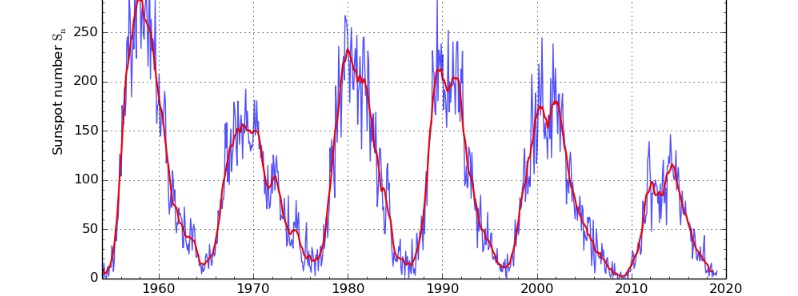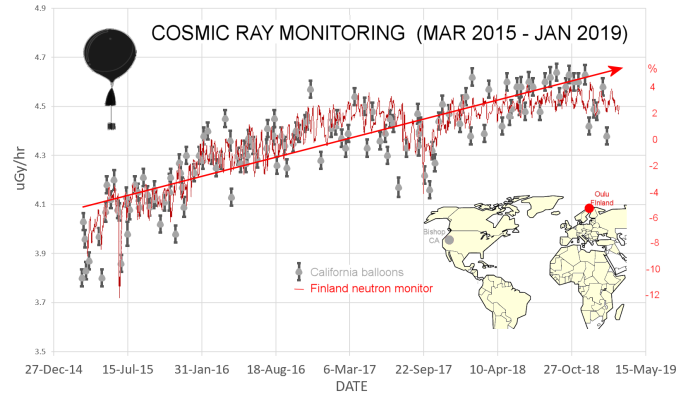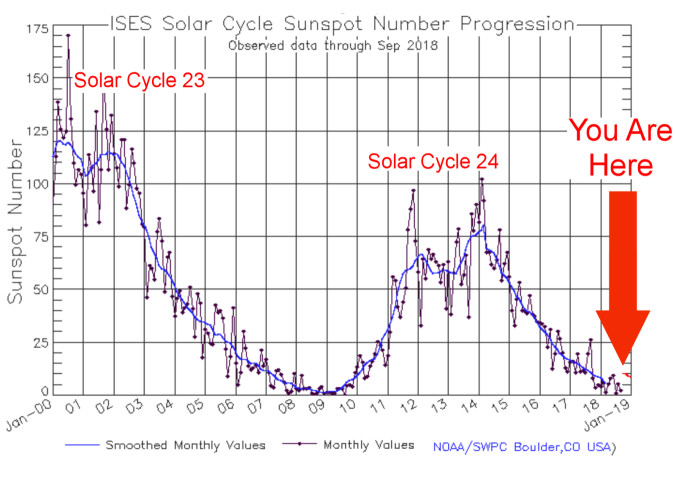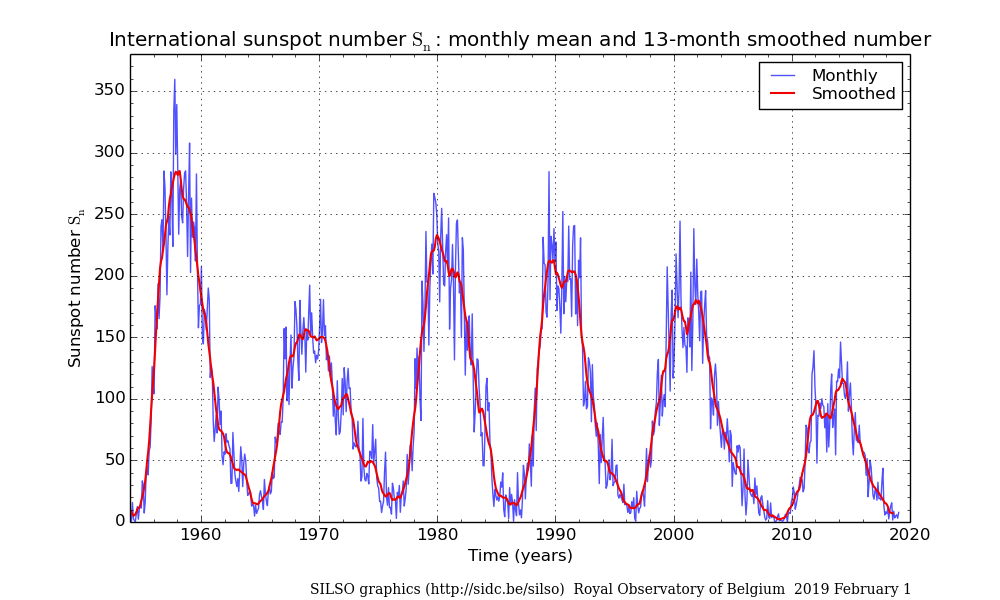Cosmic rays in Earth’s atmosphere intensifying for the fourth year in a row

Cosmic rays in Earth's atmosphere are intensifying for the 4th year in a row as the 11-year solar cycle plunges into one of the deepest minima of the Space Age. The finding comes from a campaign of almost weekly high-altitude balloon launches conducted by the students of Earth to Sky Calculus, Dr. Tony Phillips of SpaceWeather reports.
There has been an approximate 13% increase in X-rays and gamma-rays over central California, where the students have launched hundreds of balloons, since March 2015.
The grey points in the graph below are Earth to Sky balloon data. Overlaid on that time series is a record of neutron monitor data from the Sodankyla Geophysical Observatory in Oulu, Finland.

Image courtesy Earth to Sky Calculus/SpaceWeather.com
While neutron monitors have long been considered a 'gold standard' for monitoring cosmic rays on Earth, the correlation between data collected by Earth to Sky and neutron monitors is impressive, especially considering their wide geographic separation and differing methodologies, Dr. Phillips said. "This shows that our student-built balloons are gathering data of similar quality."

Image courtesy NOAA/SWPC, SpaceWeather
Cosmic rays are increasing as our star heads into Solar Minimum.
"Right now, the 11-year solar cycle is plunging into one of the deepest minima of the Space Age," Phillips said.
"The Sun’s weakening magnetic field and flagging solar wind are not protecting us as usual from deep-space radiation. Earth to Sky balloon launches in multiple countries and US states show that this is a widespread phenomenon."

Image courtesy SILSO, Royal Observatory of Belgium, Brussels
If you are new to the topic, check out our article links below:
Atmospheric radiation increasing as we head into Solar Minimum (December 07, 2017)
Cosmic rays from deep space are increasing almost unabated as the Sun's magnetic field weakens and we head into Solar Minimum. As reported by Spaceweather.com, the stratospheric balloons they've been flying together with the students of Earth to Sky…
Intensifying cosmic rays, grand solar minimum and Earth's climate (May 13, 2017)
Data provided by the students of Earth to Sky Calculus and Dr. Tony Phillips of SpaceWeather.com show cosmic ray levels are intensifying, as the Solar Minimum approaches, with an approximately 13% increase since March 2015. This article provides a brief overview of…
Study suggests Modern grand solar minimum in 2020 – 2053 (March 30, 2018)
Theoretical astrophysicist Valentina Zharkova, lead author of the study that reproduced the summary curve of solar activity for the last 3 000 years and predicted Modern grand minimum in 2020 – 2055, recently spoke with Jake and Mari of The Grand Solar Minimum…
Filament eruption, spotless Sun, Total Solar Irradiance and cosmic radiation (December 17, 2017)
A 13-degree long plasma filament eruption was observed in SDO/AIA 304 imagery starting at 12:29 UTC on December 15, 2017. A glancing blow is expected late December 19, in combination with a recurrent, positive polarity CH HSS. Meanwhile, solar activity is at very…
Featured image credit: SILSO, Royal Observatory of Belgium, Brussels

Bogdan, no data yet, but from so many indications show it has increased enormously. For instance, the Sun became brighter compare to the year 2000. The Heliosphere is now surrounded by denser plasma
Bogdan, no data yet, but from so many indications show it has increased enormously. For instance, the Sun became brighter compare to the year 2000. The Heliosphere is now surrounded by denser plasma
So, how can you explain the Sun’s weakening magnetic field although the coronal magnetic field has more than doubled in the 20th century alone?
Do you know that in the 20th century alone the Sun’s coronal magnetic field has more than doubled? Measurements of the near-Earth interplanetary magnetic field revealed that the total magnetic flux leaving the Sun has risen by a factor of 1.4 between 1964 and 1999. And surrogate measurements of the interplanetary magnetic field indicated that between, 1901-1999 the increase was by a factor of 2.3 https://www.nature.com/articles/20867
There is no way that the standard solar dogma can explain these observational data. However, according to the physical reality of the Sun, these observations make complete sense.
Any new data from 2000 to now? Maybe its’s been declining since peaking in 1999/2000?